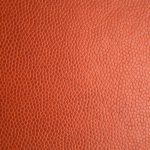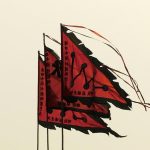Are you curious about what cotton damask fabric is? Look no further! In this article, we will delve into the history, characteristics, and uses of this versatile fabric.
You’ll learn how cotton damask fabric is made and discover tips for caring and maintaining it.
We’ll also explore the advantages and disadvantages of using cotton damask fabric in various applications.
So, if you’re ready to expand your knowledge on this fascinating textile, let’s get started!
Table of Contents
History of Cotton Damask Fabric
If you’re interested in the history of cotton damask fabric, you’ll be fascinated to learn about its origins and evolution over time.
Cotton damask has a rich history that dates back centuries. The fabric originated in the Middle East and was introduced to Europe during the Crusades. It gained popularity in Europe during the Renaissance period and was highly valued for its intricate designs and luxurious feel.
The production techniques of cotton damask have evolved over the years. In the early days, the fabric was made using a weaving technique called ‘damaskeening,’ which involved weaving patterns into the fabric using different colored threads. This labor-intensive process required skilled artisans and was time-consuming.
However, with the advent of industrialization, production techniques for cotton damask changed. Jacquard looms were introduced in the 19th century, revolutionizing the production process. These looms allowed for the creation of more complex designs and patterns, making cotton damask more accessible to a wider audience.
Today, cotton damask fabric is produced using modern machinery, which has further streamlined the production process. However, the essence of the fabric’s history and intricate designs still remain, making it a timeless and elegant choice for upholstery, curtains, and other home decor items.
Characteristics of Cotton Damask Fabric
Cotton damask fabric is known for its durability, versatility in design, and breathability, making it a popular choice for various applications.
The tight weaving technique used in the production of cotton damask results in a strong and long-lasting fabric that can withstand frequent use and washing.
Additionally, cotton damask allows for intricate and detailed designs, making it suitable for both traditional and modern aesthetics.
Lastly, the natural fibers of cotton provide breathability and comfort, making cotton damask an ideal choice for clothing, upholstery, and home decor.
Durability of Cotton Damask
You’ll be pleased to know that cotton damask fabric is highly durable and can withstand regular use without showing signs of wear and tear. It is perfect for home decor as it offers several benefits:
- Cotton damask is resistant to fading, ensuring that your furniture and curtains retain their vibrant colors for a long time.
- The intricate patterns and designs of cotton damask add a touch of elegance and sophistication to any room.
- This fabric has a soft and smooth texture, providing a luxurious feel when you touch it.
- Cotton damask is also versatile and can be used for various purposes, from upholstery and drapery to table linens and decorative pillows.
With its durability and aesthetic appeal, cotton damask fabric is an excellent choice for enhancing the beauty and functionality of your home decor.
Versatility in Design
The versatility of cotton damask allows for endless possibilities in designing and decorating your home. When it comes to design trends, cotton damask is a top choice for many interior designers. Its intricate patterns and textures can add a touch of elegance and sophistication to any room.
Whether you prefer a traditional or modern aesthetic, cotton damask can seamlessly integrate into your design scheme. Additionally, cotton damask is a sustainable option for those looking to make environmentally-conscious choices. Cotton is a natural and renewable resource, and damask fabric can be produced using eco-friendly manufacturing processes.
Breathability and Comfort
When it’s hot outside, you’ll appreciate the breathability and comfort of cotton damask. This fabric is not only stylish but also offers numerous benefits that make it perfect for warm weather. Here are some reasons why cotton damask is a great choice:
-
Lightweight: The lightweight nature of cotton damask allows for better air circulation, keeping you cool and comfortable.
-
Moisture-wicking: Cotton damask has excellent moisture-wicking properties, meaning it absorbs sweat and allows it to evaporate quickly, keeping you dry.
-
Hypoallergenic: If you have sensitive skin or allergies, cotton damask is a great option. It is hypoallergenic and gentle on the skin, reducing the risk of irritation.
-
Soft and breathable: The natural fibers of cotton damask make it incredibly soft and breathable, allowing for maximum comfort even in hot and humid conditions.
Overall, cotton damask is the perfect fabric for staying cool and comfortable during hot weather, thanks to its breathability, moisture-wicking, and hypoallergenic properties.
Uses of Cotton Damask Fabric
One way you can use cotton damask fabric is for creating elegant tablecloths. Cotton damask fabric is known for its luxurious appearance and is often used for special occasions or formal events. Its intricate woven patterns and smooth texture make it a popular choice for creating a sophisticated and stylish table setting.
When it comes to upcoming trends in tablecloths, cotton damask fabric continues to be in high demand. Its timeless and classic design makes it a versatile choice that complements various table settings and themes. Whether you are hosting a traditional dinner party or a modern event, a cotton damask tablecloth adds an element of elegance and refinement to your dining experience.
There are several popular brands that specialize in producing high-quality cotton damask fabric tablecloths. Some of these brands include DII, LinenTablecloth, and Benson Mills. These brands offer a wide range of designs, colors, and sizes to suit every taste and occasion. Whether you prefer a simple and understated design or a bold and vibrant pattern, you can find a cotton damask tablecloth that matches your personal style.
How Cotton Damask Fabric Is Made
To make cotton damask fabric, artisans weave intricate patterns using a special technique. The cotton damask production process involves several steps that result in a beautiful and durable fabric. Here’s how it is made:
-
Warp and Weft: The fabric is created by interlacing the warp and weft threads on a loom. The warp threads run vertically, while the weft threads run horizontally.
-
Jacquard Attachment: A Jacquard attachment is used to control the weaving process. This attachment allows the weaver to create intricate patterns by selectively raising and lowering the warp threads.
-
Designing the Pattern: Different types of damask patterns can be created, such as floral, geometric, or animal motifs. The design is carefully planned and transferred onto the loom using punched cards or computer programming.
-
Weaving: The weaver follows the pattern, raising and lowering the warp threads accordingly. This creates a contrast between the shiny and matte areas, giving the fabric its characteristic appearance.
The cotton damask production process requires skill, precision, and attention to detail. The result is a luxurious fabric that is often used for upholstery, draperies, and table linens.
Each piece of cotton damask fabric is a work of art, showcasing the craftsmanship of the artisans who bring these intricate patterns to life.
Care and Maintenance of Cotton Damask Fabric
When it comes to caring for your cotton damask fabric, it’s important to follow proper washing guidelines to ensure its longevity.
From using a gentle cycle and cold water to avoiding harsh detergents and bleach, these guidelines will help keep your fabric looking its best.
Additionally, knowing the right stain removal techniques and taking preventative measures to avoid fabric shrinkage will further contribute to the maintenance of your cotton damask fabric.
Washing Guidelines for Damask
If you want to wash your damask fabric, be sure to follow these guidelines to ensure its longevity.
Damask is a delicate fabric that requires special care. Here are some washing techniques and drying methods to keep in mind:
- Use a gentle, mild detergent specifically designed for delicate fabrics.
- Hand wash the fabric in cold water to prevent shrinkage.
- Avoid scrubbing or rubbing the fabric vigorously, as this can damage the intricate patterns.
- After washing, gently squeeze out excess water and avoid wringing the fabric.
To dry your damask fabric:
- Lay it flat on a clean, dry towel to air dry.
- Avoid exposing it to direct sunlight, as this can cause fading.
- Do not tumble dry or use high heat, as it can shrink or damage the fabric.
Stain Removal Techniques
For removing stains on delicate fabrics, such as damask, it’s important to use gentle stain removal techniques. Stains on damask can be a real headache, but with the right approach, you can tackle them effectively.
First and foremost, prevention is key. Treat spills and stains immediately to prevent them from setting in. Blot the stain gently with a clean cloth to absorb as much of the liquid as possible. Avoid rubbing or scrubbing, as this can damage the fabric.
When it comes to cleaning products, opt for mild, non-abrasive options that won’t harm the delicate fibers. Always test the product on a small, inconspicuous area before applying it to the stain.
Preventing Fabric Shrinkage
To prevent shrinkage in delicate fabrics, it’s important to follow the care instructions and avoid using high heat in the dryer. Here are some fabric care techniques that can help you prevent fabric shrinkage:
- Use cold water when washing your delicate fabrics. Hot water can cause the fibers to shrink.
- Avoid overloading the washing machine. This can lead to excessive friction and cause shrinkage.
- Gently squeeze out the excess water from the fabric instead of wringing it. Wringing can distort the fibers and contribute to shrinkage.
- Air dry your delicate fabrics whenever possible. High heat from the dryer can cause the fibers to contract and shrink.
Advantages and Disadvantages of Cotton Damask Fabric
You’ll find that cotton damask fabric has both advantages and disadvantages.
When it comes to uses, cotton damask fabric is widely used in upholstery, curtains, and table linens. Its intricate patterns and sheen make it an elegant choice for home decor.
One of the main benefits of using cotton damask fabric is its durability. Cotton is known for its strength, making the fabric resistant to wear and tear. Additionally, cotton damask fabric is breathable, allowing air to circulate and keeping you cool in hot weather.
Another advantage is its versatility. Cotton damask fabric can be easily dyed, allowing for a wide range of color options.
However, there are also some drawbacks to consider. Cotton damask fabric tends to wrinkle easily, requiring frequent ironing to maintain its crisp appearance. It is also prone to shrinking if not properly cared for, so it is important to follow the manufacturer’s washing and drying instructions.
Additionally, cotton damask fabric may fade over time, especially if exposed to direct sunlight.
Overall, while cotton damask fabric offers durability, breathability, and versatility, it does require some extra care and maintenance.
Conclusion
In conclusion, cotton damask fabric is a versatile textile with a rich history and unique characteristics.
It has been used for centuries in various applications, from upholstery to tablecloths.
The fabric is made through a complex weaving process, resulting in its distinctive patterns and durability.
While cotton damask fabric offers many advantages, such as its breathability and easy care, it also has some disadvantages, including its tendency to wrinkle.
Overall, cotton damask fabric remains a popular choice for those seeking a luxurious and timeless fabric option.
- What Is Pochampally Ikat? a Journey to India’s Silk City - June 27, 2025
- What Is Pochampally Ikat? a Journey to India’s Silk City - June 27, 2025
- What Is Pochampally Ikat? a Journey to India’s Silk City - June 27, 2025






